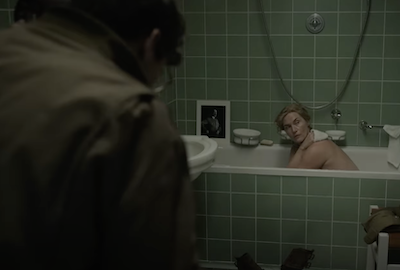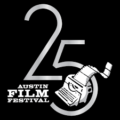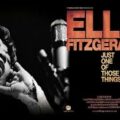
Once you meet Lee Miller, you will never forget her. Neither could Kate Winslet who made playing the gutsy World War II photographer her passion project. It took her 9 years to bring her story to the big screen. And it was only after Lee died that that her only son, Tony, found over 60,000 photographs and 20,000 prints plus her writings in the attic of the family farm house. The film is based on the book Tony wrote and published in 1995 after her death.
What’s even more remarkable, Tony knew nothing about what his mother fought so hard to do during the war. Like many veterans who saw combat, she would never talk about it. Unfortunately, Lee had PTSD, and became an alcoholic which took a terrible toll on their relationship. But when Tony saw and learned about all she had done, he became her biggest supporter, writing a book and creating exhibitions and an archive of all of her work.
Kate Winslet was taken by Lee’s story, which had never been told. She became an Executive Producer and plays the lead role which spans most of Lee’s life. Winslet goes from young, vibrant and carefree, to adamant about going to the front lines where females aren’t supposed to be, to becoming a world weary, unruly old lady unable to talk about what she saw and photographed. Winslet carries all of the personality changes off with ease plus help from wardrobe and makeup. This is no vanity project.



Director Ellen Kuras -(Cinematographer – Eternal Sunshine of the Spotless Mind) and writers Liz Hannah, Marion Hume and John Collee recreate the life of Lee Miller, who was determined to show the world what war was like with her photos of death and utter despair in the faces of children as well as the suffering of soldiers and mass execution of Jews in the death camps. There’s also the thread finding out which of her French friends survived. A poignant, yet disturbing scene is when she finds her best friend Solange (Marion Cotillard) after the war, in a sad state on her knees, cleaning up her old apartment left in shambles by the Nazis. Lee’s most ballsy photo was taken in Hitler’s plush bathroom after Germany surrendered. She took great pleasure wiping her boots with dust from Dachau on his white rug. She then disrobes, gets in the tub, and poses smiling with the Führer’s picture as background. Classic.
Miller was born in Poughkeepsie in 1907. She was a stunning young woman who became a Vogue Magazine model in Britain and France. Her father taught her how to use the Rolleiflex camera he gave her which became more than a hobby. She left modeling to become a full-time photographer for British Vogue.
Opening scenes have Lee her covering WWII combat on the streets of Paris where she’s almost blown to smithereens. She’s in a khaki uniform, taking photo after photo of the mayhem in the fog of war. The film quickly flashbacks to a young man asking Lee to see her photos. She is old and persnickety, wryly saying “What does it matter?” She doesn’t want to show or talk about the pictures. He has to pry words out of her as she drank vodka and smoked one cigarette after another.
The film shifts back and forth between that interview and a chronology of her life as a photographer sparring with the famous uppity royal photographer and Broadway costume designer (Tony winner for My Fair Lady) Sir Cecil Beaton. Beaton thinks her photos are too raw, showing too much that’s not high fashion. But her editor, friend and fan of Lee’s work, Audrey Withers (Andrea Riseborough) lobbies for her work to be shown. Riseborough looks very different from her controversial Oscar nominated role in To Leslie. She gives a strong performance as an early advocate for rewarding female talent, especially Lee’s.
Next we see her al fresco in France, greeting artistic Bohemian friends who were involved in the Surrealist Movement. Lee very casually, and literally, bares her chest along with other women at the table. She’s hard drinking, smoking and having a good time, until the handsome Brit ex-model, Roland Penrose (Alexander Skarsgård), walks up. She challenges him like she does everybody she meets, sparking a sexy passionate love affair. He is a famous painter and poet and they fall head over heels. But he respects her decision to go off to photograph World War II, even though he is a conscientious objector.



Determined to go photograph where the action is, but frustrated at being kept from the front lines because she is a woman. Directed to stay back and photograph the injured in the medical tents, she sent back photos of the horrifically wounded, their surgeries and amputations so people would know the real story. Only when she used her citizenship, “I’m an American” was she allowed to go to the front lines and teamed up with writer/photographer David Scherman (Andy Samberg). We were impressed with Samberg’s breakout performance in this serious role.
One of the most striking aspects of the film is how accurately Kuras and cinematographer Paweł Edelman recreated the dramatic photos and bring the subjects to life as Lee is taking snapping the shutter. Stay through the credits to see Lee’s actual photos. Although it could be considered click bait this award season, Winslet’s performance unflinchingly shows what a terrible price this woman paid for her photographic artistry, fiercely fighting misogyny to expose war’s brutality.
Roadside Attractions 1 hour 57 minutes. R









